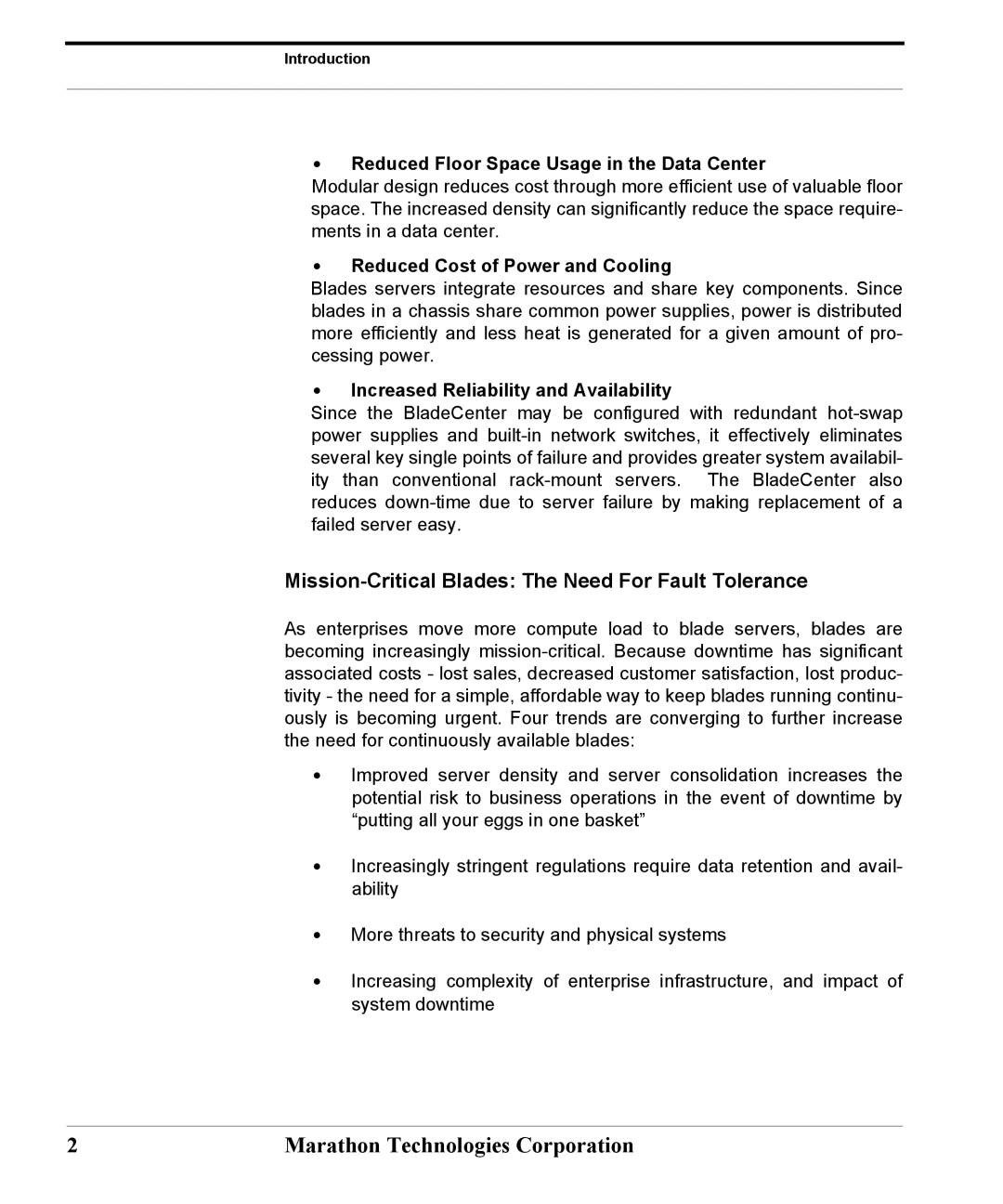
Introduction
•Reduced Floor Space Usage in the Data Center
Modular design reduces cost through more efficient use of valuable floor space. The increased density can significantly reduce the space require- ments in a data center.
•Reduced Cost of Power and Cooling
Blades servers integrate resources and share key components. Since blades in a chassis share common power supplies, power is distributed more efficiently and less heat is generated for a given amount of pro- cessing power.
•Increased Reliability and Availability
Since the BladeCenter may be configured with redundant
Mission-Critical Blades: The Need For Fault Tolerance
As enterprises move more compute load to blade servers, blades are becoming increasingly
•Improved server density and server consolidation increases the potential risk to business operations in the event of downtime by “putting all your eggs in one basket”
•Increasingly stringent regulations require data retention and avail- ability
•More threats to security and physical systems
•Increasing complexity of enterprise infrastructure, and impact of system downtime
2 | Marathon Technologies Corporation |
